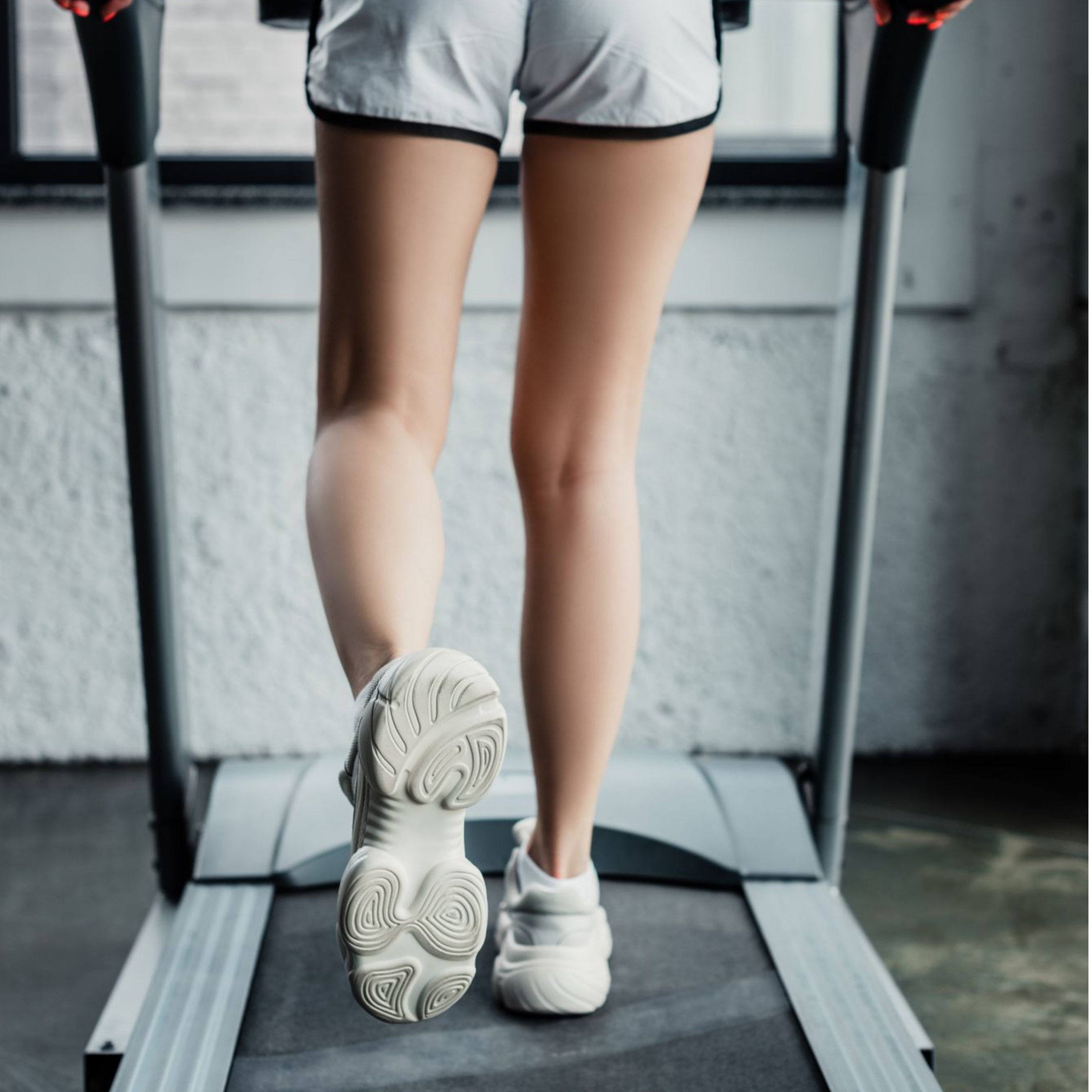Treadmills are one of the most popular pieces of fitness equipment, offering a convenient way to stay active.treadmill maintenance
Understanding the manufacturing process and how to maintain your treadmill can ensure it lasts longer and performs optimally. This comprehensive guide covers the essential steps in treadmill manufacturing and provides key maintenance tips.
Treadmill Manufacturing Process,treadmill maintenance
- Design and Planning
- Conceptualization: The first step is designing the treadmill. Engineers and designers collaborate to create a machine that meets both functional and aesthetic requirements.
- Prototyping: After the initial design, a prototype is built to test various features and ensure the design is practical and efficient.
- Frame Construction
- Material Selection: High-quality steel or aluminum is typically used for the frame. These materials ensure durability and stability.
- Cutting and Welding: The selected materials are cut to the required lengths and welded together to form the frame. Precision in cutting and welding is crucial for structural integrity.
- Motor Installation
- Motor Selection: The motor is a critical component that powers the treadmill. Manufacturers select a motor that provides the desired speed and incline capabilities.
- Mounting the Motor: The motor is securely mounted onto the frame, and its alignment is checked to ensure smooth operation.
- Deck and Belt Assembly
- Deck Preparation: The deck, usually made of wood or composite materials, is prepared and attached to the frame.
- Belt Installation: The treadmill belt is carefully installed around the deck and rollers. Proper tension and alignment are essential for smooth operation. Detailed instructions can be found in the belt installation guide.
- Electronic Components
- Control Panel: The control panel, including the display and buttons, is installed and connected to the motor and other electronic components.
- Wiring: All electronic components are wired together, and safety checks are performed to ensure there are no short circuits or loose connections.
- Final Assembly and Testing
- Assembly: All components, including safety features and cosmetic elements, are assembled.
- Testing: The treadmill undergoes rigorous testing to ensure all features work correctly. This includes checking the motor, belt alignment, speed, incline functions, and safety features.
Treadmill Maintenance
- Regular Cleaning
- Surface Cleaning: Regularly clean the treadmill’s surface to remove dust and sweat. Use a damp cloth and mild detergent.
- Belt and Deck Cleaning: Keep the belt and deck clean to prevent debris from causing wear and tear. Detailed cleaning instructions can be found in the cleaning guide.
- Lubrication
- Lubricate the Belt: Proper lubrication reduces friction between the belt and deck, extending their lifespan. Apply lubricant as recommended by the manufacturer.
- Lubrication Frequency: Typically, lubricate the belt every three months, but refer to the manufacturer’s guidelines for specific intervals. For more on lubrication, see the maintenance section.
- Belt Tension and Alignment
- Check Tension: Regularly check the belt tension. A loose belt can slip, while a tight belt can cause excessive wear on the motor and rollers.
- Adjust Alignment: Ensure the belt is centered and aligned correctly. Misalignment can cause the belt to rub against the sides, leading to damage. Refer to the belt alignment guide for detailed instructions.
- Inspection and Replacement of Parts
- Inspect Components: Regularly inspect the treadmill for any signs of wear and tear, such as frayed belts or loose bolts.
- Replace Worn Parts: Timely replacement of worn parts is crucial to maintain the treadmill’s performance. For parts replacement, consult the replacement guide.
- Electronic Maintenance
- Check Connections: Periodically check all electronic connections to ensure they are secure.
- Software Updates: If your treadmill has a digital interface, ensure it is updated with the latest software for optimal performance.
Conclusion
Understanding the manufacturing process and following a regular maintenance routine can significantly extend the life of your treadmill. Regular cleaning, proper lubrication, and timely replacement of worn parts will keep your treadmill running smoothly. For more detailed guides and tips, visit the Fitnesservice website.
 Fitness service
Fitness service
Production of Treadmill Treads: Click Here
We will get your treadmill in good condition. We produce treads, rubber belts for running trainers.
Making treads, rubber bands for running belts can be a complex process involving several steps. First, the right material must be chosen, which will be resistant to wear and have enough flexibility for comfortable running. The material is then cut to the required dimensions and shaped into a shape that corresponds to a particular model of treadmill.
The next step is the application of surface treatment treads, rubber bands which may include painting or other means of protection against wear. Depending on the customer’s requirements, it may also be necessary to add a layer of anti-slip treatment or other special features.
After that, treads, rubber tracks must be thoroughly inspected and tested to ensure it meets quality and safety requirements. If it passes inspection, it can be ready for shipment to the customer or installation on the treadmill.
It is important to note that the production of treads, rubber belts for treadmills is a rather demanding process that requires precision and consistency. It is therefore important that this process is carried out by qualified personnel who are able to ensure a quality and safe result.
In the menu you will find treads for home. Kettler, Spoukey, Insporlline, BROTHER ,DUVLAN, LIFEFIT,HMS, Zipro, Master, Diadora, Fassi, HouseFit, Reebok, BH fitness, Capital Sports, Acra, DOMYOS, Cecotec RunFIt, Klarfit, Spartan and many others.
And for professional treadmills BH FITNESS, Kettler , Life fitness, Precor, Matrix, Insportline, NORDICTRACK , Sapillo, HAMMER, HMS, HOUSEFIT, PROFORM, TUNTURI, Spokey, Technogym etc.
Production of Treadmill Treads: Click Here
Insufficient Power Supply: Ensure that the treadmill is correctly plugged into a power source. If applicable, check the battery power and ensure it has an adequate charge. Motor Malfunctions: Examine the treadmill’s motor for signs of damage or wear, as these issues can impede proper functionality. Belt or Pulley Problems: Assess the condition of the treadmill belt and pulleys; worn or damaged parts can hinder the treadmill’s movement. Electronic Component Issues: Investigate the electronic components for any signs of damage or wear, as these can disrupt the overall operation of the treadmill. Damaged Tread: Check the treadmill tread for any visible damage that may affect its performance. If you find yourself unable to rectify the problem independently, it is advisable to seek professional assistance. Consider reaching out to a qualified technician or contacting the treadmill manufacturer’s service center. Professional expertise …
Tread“ of the treadmill slides to the side
There should be equal space between the treadmill belt and the foot rails on both sides. Which side the belt slides to will determine how you do the repair. On almost all treadmills, you can re-center the belt by tightening the roller screw on the side the belt slides to or loosening the roller screw on the side the belt slides out of. On almost all running machines, it is impossible to mistake the cylinder adjustment screws for anything else. These are two hex head screws at the very end of the treadmill, recessed into the leg rails on either side of the belt. Which screw you adjust and whether you decide to tighten or loosen it depends on your brand of treadmill. If you are not sure which screw to adjust, refer to the owner’s manual. How to center the belt? Stand on the side of the treadmill and run it at a speed of 3 km/h and watch it for at least two minutes. Does the belt start to center itself? If so, you may simply have a leveling problem. Use the leveling feet on …
The treadmill turns off during exercise
There are several reasons why your treadmill might turn off during exercise. Among the main reasons are: If you can walk on the treadmill but it shuts off during your workout, it’s usually caused by a friction problem between the belt and the plate Poorly buckled belt: If the belt is not buckled correctly, it can come off or move during exercise. Motor malfunction: If the treadmill motor is damaged, it may turn off or fail during exercise. Control unit malfunction: If the treadmill control unit is damaged or malfunctioning, it can cause the treadmill to turn off during exercise. Sensor failure: If the treadmill sensor is damaged or failing, it may cause the control unit to malfunction and thus turn the treadmill off. Power problem: If the treadmill is not properly powered or there is a power outage, it may turn off during exercise. In such a case, it would be advisable to check the tension of the belt, or contact an …
Proper tension of the treadmill
Proper running belt tension on the treadmill will ensure that the belt moves with the correct resistance and without deflection. When tensioning the belt it should be tensioned so that only a small diameter (approximately 2- 4cm). The belt should not touch the rear of the treadmill and should be evenly distributed across the entire width of the treadmill. Before starting to tension the treadmill, make sure that the machine is turned off and that no personnel is on the treadmill. Use a wrench or tool designed for tensioning the belt. Place a wrench or tool on the tension wheel and tighten it. When tightening, make sure that the belt is stretched evenly along its entire length. When tensioning the belt, make sure the belt does not press into the back of the treadmill. The belt should be taut so that only a small diameter (approximately 2-4cm) can slide between the fingers after pressing the central part of the belt. Wh…treadmill maintenance
Get your treadmill tread replaced before it’s too late!
Although treadmills at fitness centers depreciate faster than treadmills purchased at home, this does not mean that home treadmills should be overlooked. Treadmills need to be replaced from time to time. So don’t delay and check your treadmill tread today! Treads are available in different models, so you are sure to find the right one for your machine. The difference before and after changing the tread is significant – the workout before the change is pure suffering, on the contrary, the one after the change will literally run away, you won’t even know how. Nowadays, many people do their best for themselves – they buy high-quality food, indulge in a good night’s sleep or exercise regularly, including on treadmills. They operate all this with a vision of long-lasting health and life vitality. But have you ever thought about how to properly take care of the resources we need for these goals? Perhaps such treadmills are among the most popular fitness machines.&nb…
The treadmill is in dire need of replacement
However, it’s still just a machine that will wear out and will need a little boost in its beauty. What to buy him a new jacket? The description of the category of treads for treadmills offers many versions, so now it is necessary to measure well and choose the appropriate part. Long life It is true that in a home environment treadmills will have a longer and longer life, as they are not as demanding as in fitness center. But there is no need to mourn here either, as these treads are also available in the offer, so they can wait for renewal here as well. You can choose them according to the description of the category treads for professional treadmills and the machine will be like new. This replacement will extend the life, and it will also be good for running and climbing. For any fitness company, it is a tragedy when they cancel a piece of fitness equipment. The equipment does not work and instead of making money, it is plastered with an OUT OF SERVICE notice….
Check the drive system to see if any part is scraping against another part. The belt should be aligned, the traction devices should be aligned, and the motor fan and the „fins“ that move inside the speed sensor are all areas to check. Check the belt guide under the running belt. If the belt is pushed too aggressively, it can cause a squeal. You can bend the guides if necessary. The noise is usually caused by a worn drive belt or a loose pulley on the front cylinder. Read the help topic Belt displacement in our troubleshooting section to learn how to spot a loose pulley. If the pulley checks out and the bearings are OK, replace the motor belt. Disconnect the motor belt, turn on the treadmill and listen to the motor. If the motor is too hot and deforms either the comet, the brushes, or is shorted, you can get bad brush noise. If you have bearing noise in one of the rollers or motors, we can usually fix the part for you or you will have to replace it. If it makes a squeak…
STEP 1 Use a measuring tape to measure the exact width of the treadmill. STEP 2 For measuring length, there are three general ways to do it. If you have adjusted the belt as much as possible, return it to normal tension before measuring. a) Put the belt under the front cylinder (you’ll need the engine cover and for God’s sake disconnect the treadmill first). Once you have the tape on the back – sticking out of the back cylinder – it helps if you have a friend – pull the tape around and measure it tight and tight. b) If you do not want to use the existing belt and longer, carefully cut it to width. Lay the belt flat and measure from one end to the other on one of the edges of the belt. This will give you the exact belt length. c) Another method is to use a piece of twine or twine. STEP 3 Glue one end of the string to the treadmill and rotate the belt all the way until the string loop is complete. STEP 4 Cut the string exactly at the end of the loop. STEP 5…
Does my belt need cleaning? The treadmill is a popular part not only of fitness centers, but also of many households. It provides a great way to relax, exercise and get in shape, as well as weight loss support. You can thus run or walk in any weather and set the load as you currently need or can manage. The treadmill needs to be properly cared for so that it can serve for a long time and with quality, so you are probably asking yourself the question if your belt needs cleaning? The suitable location of the treadmill is in a clean and dusty place. If the trainer is located in such a place, then maintenance is not complicated and dust and dirt will not be a big problem even during lubrication. For cleaning, you can use special cleaners designed for this purpose, but with a clear conscience, only clean water and a nylon brush will do. Maintenance is simple and does not take much time, just like regular lubrication. Removing dirt from the top of the belt reduces the heati…
The treadmill may be too loose. If you have recently made adjustments, lubricated or repaired the belt, if it is not properly tightened, it can slip. The belt can slip if it rubs too much or if the belt has recently been lubricated. If the lubricant does not help your problem and you have exhausted all other options, the belt is most likely worn and needs to be replaced. Follow these steps to adjust the belt: An excessively tight treadmill belt can increase the reinforcement of your treadmill, contribute to the separation of the seams on the treadmill, or both, so that the drive belt is not overloaded. As a general rule of thumb, you should be able to raise the band about 2″ to 3″ in the center on the side. It is true that if you can’t raise it 2″ to 3″, the belt is too tight. 2) The drive belt between the motor and the front roller may slip. a) All drive belts tend to wear out with age and if they are not properly aligned this will happen eve…treadmill maintenance


 Fitness service
Fitness service









Napsat komentář